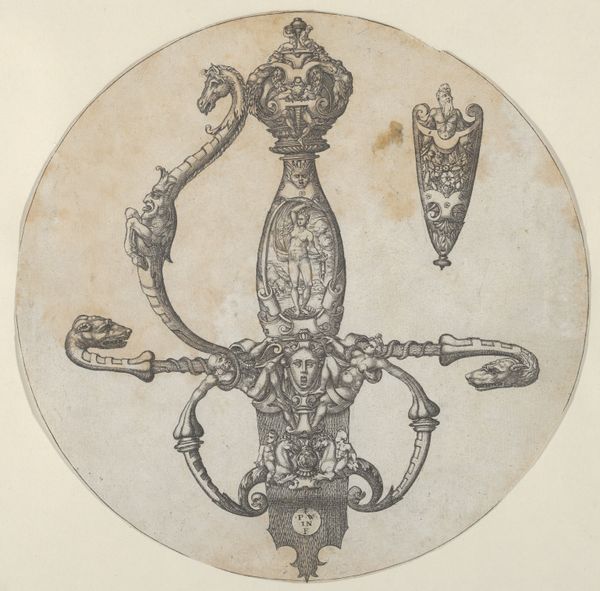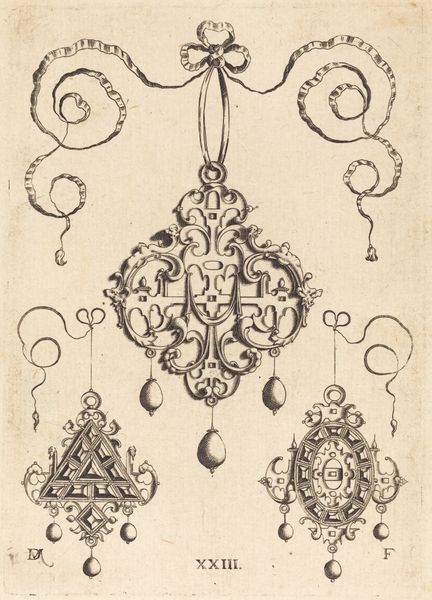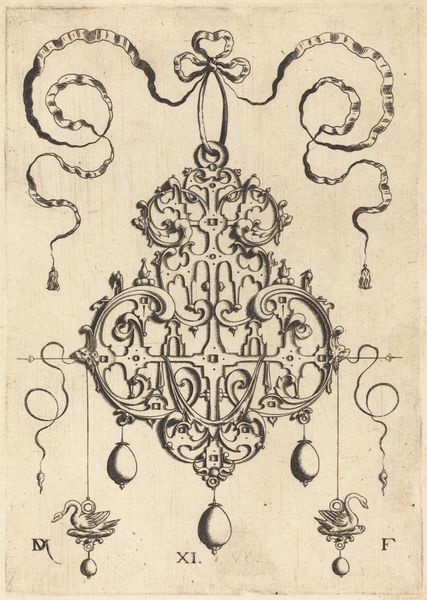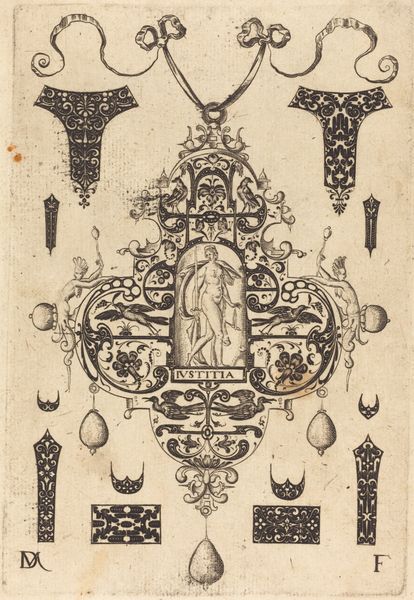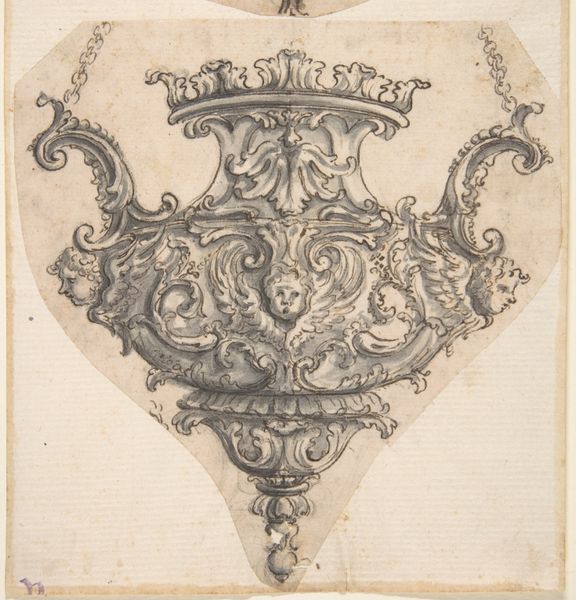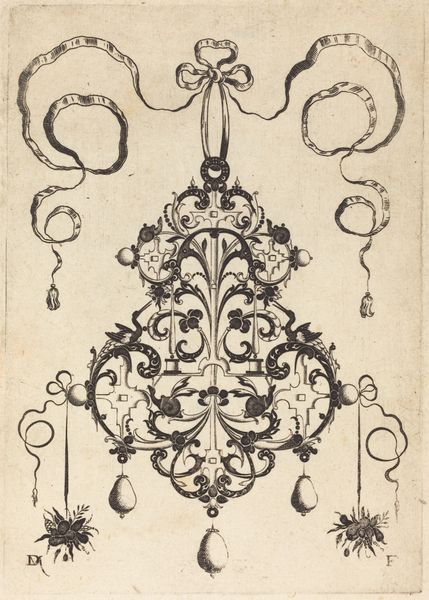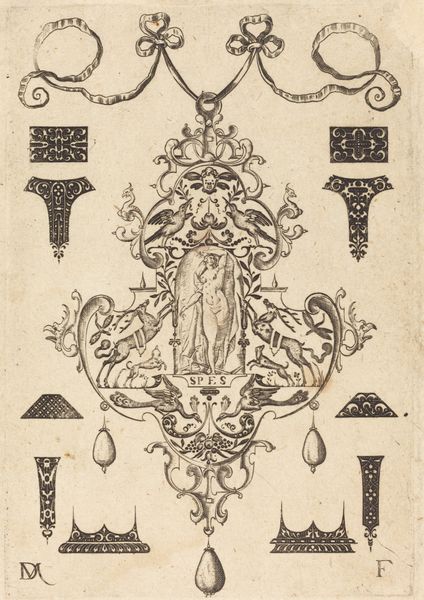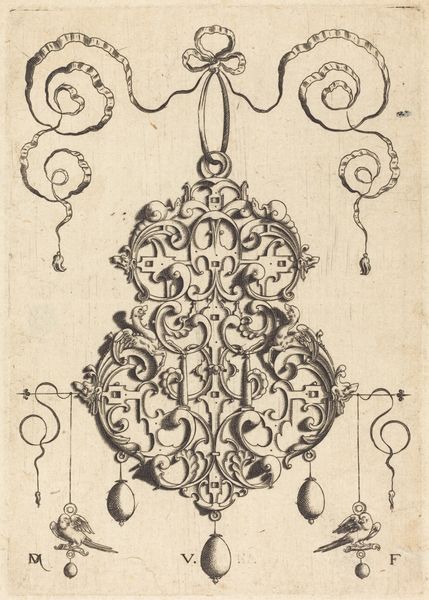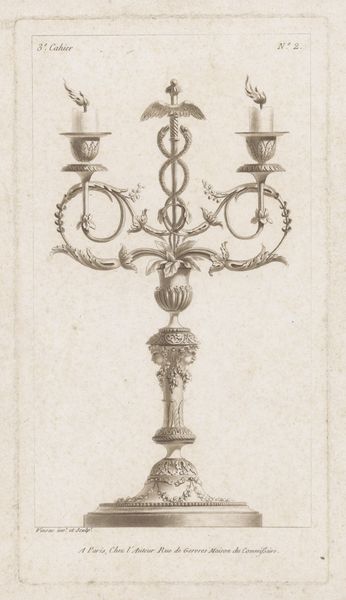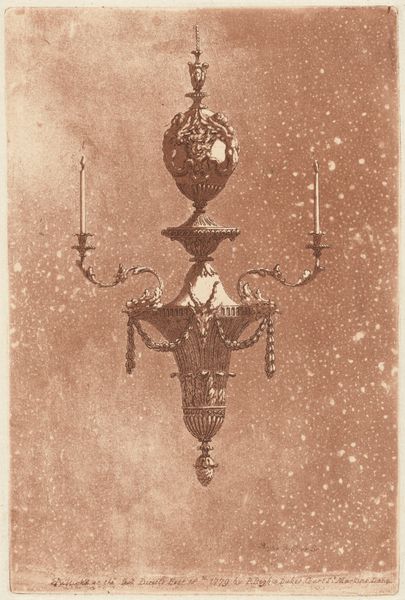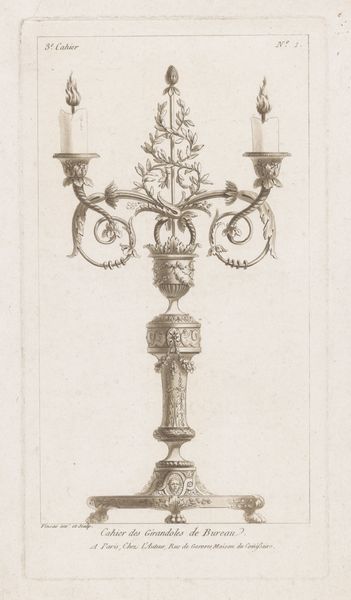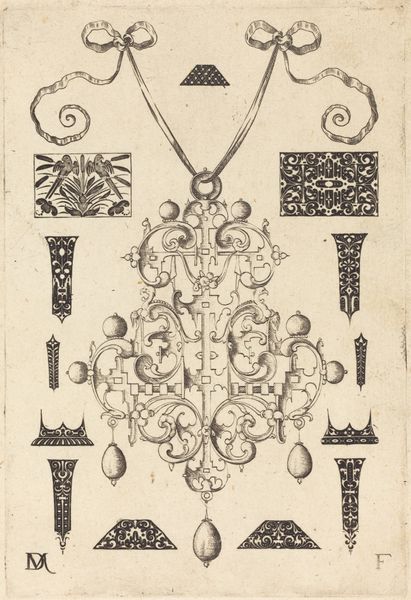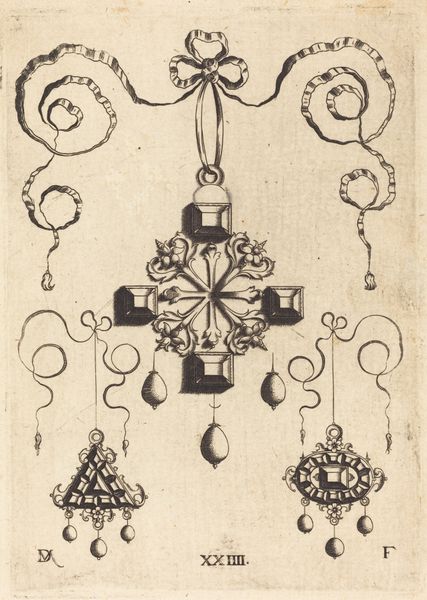
Design for a Rapier Hilt and Scabbard Chape 1555
0:00
0:00
drawing, ornament, metal, paper, engraving
#
drawing
#
ornament
#
metal
#
figuration
#
paper
#
form
#
11_renaissance
#
france
#
men
#
watercolour illustration
#
history-painting
#
armor
#
italian-renaissance
#
engraving
Dimensions: Diam. 7 1/2 in. (19.1 cm)
Copyright: Public Domain
Editor: So, this is "Design for a Rapier Hilt and Scabbard Chape" by Pierre Woeiriot de Bouzey II, created around 1555. It’s a drawing, quite intricate, almost like an engraving, detailing metalwork. I'm struck by the density of imagery... what do you see in this piece, considering its place in Renaissance design? Curator: It's a fascinating object! Immediately, I'm drawn to the convergence of classical ideals with the burgeoning individualism of the Renaissance. Notice the figures: they’re classical in form, reminiscent of ancient statuary, but their arrangement... chaotic, almost. It speaks to a culture grappling with its inherited past, reinterpreting it with a newfound fervor. Do you observe any recurring motifs? Editor: I notice a lot of male figures, some looking quite tortured, entwined with what looks like foliage or maybe sea serpents? And masks. What does this mean, emotionally, symbolically? Curator: The male figures, often depicted in moments of intense emotion or struggle, tap into a long tradition of representing virtue and strength through the human form. The "tortured" aspect speaks to the trials and tribulations of leadership and the responsibility of power. Foliage and serpents can symbolize the wild, untamed aspects of nature or the darker impulses of man. And masks… what do masks suggest to you? Editor: Concealment, performance…maybe the duality of human nature? Curator: Precisely. It points to a culture deeply concerned with appearance and reality, public image versus private self. This design wasn't merely decorative; it was intended to imbue the wearer with authority, both earthly and perhaps spiritually. Can you see how the artist layers these symbolic elements? Editor: It’s interesting how a seemingly simple design for a sword can tell so many stories about Renaissance anxieties and values. Thanks for pointing all of that out! Curator: Indeed. Visual symbols continue to shape and carry collective memory, don’t they? Examining details like these opens a window into the complex minds of past cultures.
Comments
No comments
Be the first to comment and join the conversation on the ultimate creative platform.
